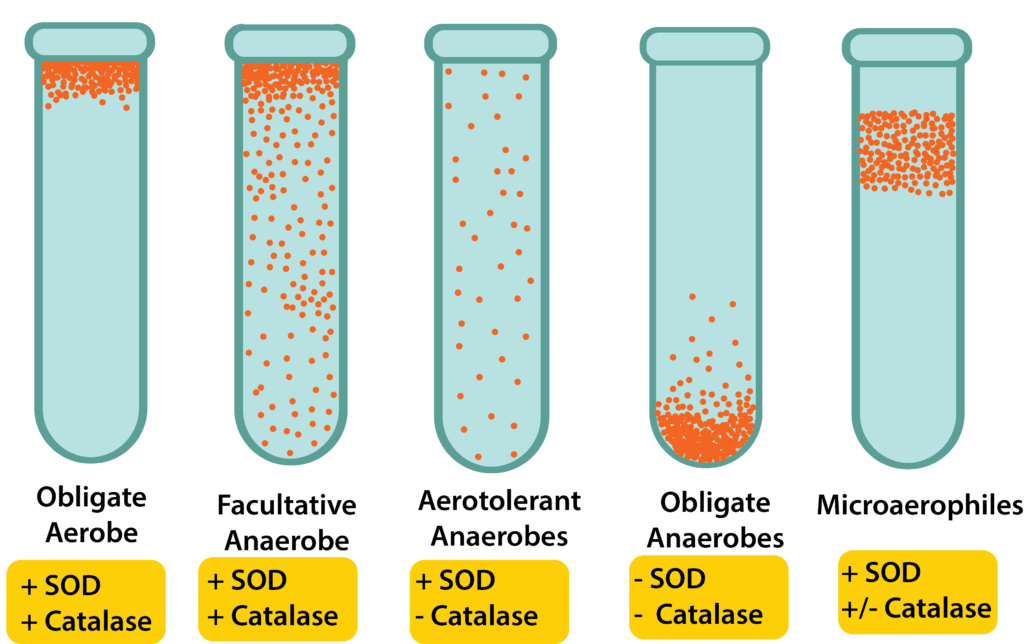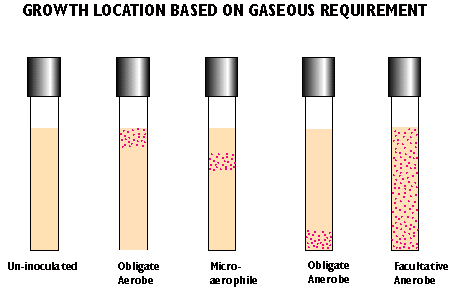Microaerophiles Are Microbes Which Grow Best at Low
These microaerophiles are bacteria that require a minimum level of oxygen for growth about 110 well below the 21 found in the atmosphere. Problem 5 Medium Difficulty.

Microbes Team With Nanoscale Zero Valent Iron A Robust Route For Degradation Of Recalcitrant Pollutants Sciencedirect
Most are microaerophiles that use a low concentration of oxygen as a terminal electron acceptor although sulfur compounds and nitrate can also be used as an electron acceptors.

. If a candle is placed in a jar with the microbe in a broth on an agar it will remove the oxygen when a lid is placed on the jar. Microaerophiles are microbes that grow best at low o hydrostatic pressure salt concentrations O carbon dioxide levels O pH values O oxygen levels. Microaerophiles that grow best with a low level of oxygen and a high concentration of carbon dioxide are called capnophiles.
How many cells would be present in a milliliter. Bacteria grow at the bottom of tube B. The bacterial species that grow at a pH range above or below the preferred value would not survive.
Diagram of bacterial cell distribution in thioglycolate tubes. Aerotolerant microbes are the organism which prefer an anaerobic atmosphere but can tolerate low levels of oxygen. Microaerophiles require low level of oxygen t.
Facultative or aerotolerant anaerobes can grow throughout the medium but will primarily grow in the middle of the tube between the oxygen-rich and oxygen-free zones. Where would a Microaerophile grow in a tube of nutrient broth. Tube B looks like the opposite of tube A.
Acidophiles have optimal growth at pH values near 3 and alkaliphiles have optimal growth at pH values above 9. A microaerophile is a microorganism that requires oxygen to survive but requires environments containing lower levels of oxygen than that are present in the atmosphere ie. View the full answer.
Microaerophiles are microbes that grow best at low A oxygen levels B hydrostatic from BIOL 206 at Texas AM University. Normal levels of oxygen in the environment are approximately 20 1 while typical levels for growth of microaerophiles is around 5-10 oxygen and 8-10 carbon dioxide 2. The basic pH also inhibits microbial growth.
Microaerophiles that grow best with a high concentration of carbon dioxide in addition to a low level of oxygen are called _____. The growth of bacteria with varying oxygen requirements in thioglycolate tubes is illustrated in Figure 82. Found inside Page 187 a b c FIGURE 93 Environments of Various Temperatures and the Microbes That Grow within Them.
The bacteria are obligate strict aerobes that cannot grow without an abundant supply of oxygen. These microaerophiles are bacteria that require a minimum level of oxygen for growth about 110 well below the 21 found in the atmosphere. Examples of obligate aerobes are Mycobacterium tuberculosis the causative agent of tuberculosis and Micrococcus luteus a gram-positive bacterium that colonizes the skin.
Microaerophiles are grown best in an low oxygen environment. But bacteria at optimum pH show the best growth in nearly neutral pH ie. 25 Bacteria which grow best at temperature of 50C are called 1pts psychrophiles O mesophiles thermophiles microaerophiles 26 Yeast extract is added to a peptone medium.
The acidic pH usually restricts microbial growth and it is frequently used in food preservation methods. Mesophiles grow at moderate temperature that is below 46C Psychrophiles live in low temperature. Certain others able to grow best in the presence of low amounts of oxygen are called microaerophiles.
Some species called facultative anaerobes are able to grow either with or without free oxygen. Microaerophiles are microbes which grow best at low oxygen levels. Microaerophiles that grow best with a high concentration of carbon dioxide in addition to a low level of oxygen are called.
Examples of obligate aerobes are Mycobacterium tuberculosis the causative agent of tuberculosis and Micrococcus luteus a gram-positive bacterium that colonizes the skin. Hence the option a is incorrect. E carbon dioxide levels.
These microaerophiles are bacteria that require a minimum level of oxygen for growth about 110 well below the 21 found in the atmosphere. They can be found evenly spread throughout the test tube. To create this special atmosphere gas.
Higher oxygen tensions may be inhibitory to them. Microaerophiles will grow in a thin layer below the richly-oxygenated layer. Microaerophiles are a group of microorganisms that require a low to reduced oxygen content and an increased carbon dioxide content in the atmosphere for growth.
Microaerophiles are microbes that grow best at low-A salt concentrations. Typically 210 O 2. Obligate anaerobes will only grow in the lower areas of the tube.
Microaerophiles mipkro-aero-filz are those groups of bacteria that can grow best under reduced oxygen 5 to 10 and increased carbon dioxide 8 to 10 concentrations. 21 O 2. The oxygen level has to be just right for growth not too much and not too little.
Encyclopedia of Microbiology Fourth Edition 2019. In tube A all the growth is seen at the top of the tube.

Anaerobes Types Of Bacteria Classification And Examples

Oxygen Requirements For Microbial Growth Microbiology Health And Disease

Bacterial Growth And Different Environmental Factors Affect Bacterial Growth

Environmental Factors General Microbiology

List Of Failed And Successful Growth Of Bacterial Strains Including Download Scientific Diagram

Basics Of Fluid Thioglycollate Media Ftm With Examples Youtube

Methods For Growth Success Microaerophiles Microbiologics Blog

Solved Draw Thioglycolate Culture Tube Label The Regions In Your Culture Tube That Have Noto Very Low Oxygen High Oxygen Low To Moderate Amounts Of Oxygen Label The Regions Where Organisms Use Aerobic

Oxygen Requirements For Microbial Growth Microbiology

Chapter 6 Microbial Growth Partial

Microbiology Lab Test 2 Flashcards Quizlet

Microbiology 130 Study Guide For Chapters 6 7 20

Bacteria Oxygen Requirements Youtube

Camp Test Principle Uses Procedure And Result Interpretation Medical Laboratory Science Microbiology Microbiology Humor




Comments
Post a Comment